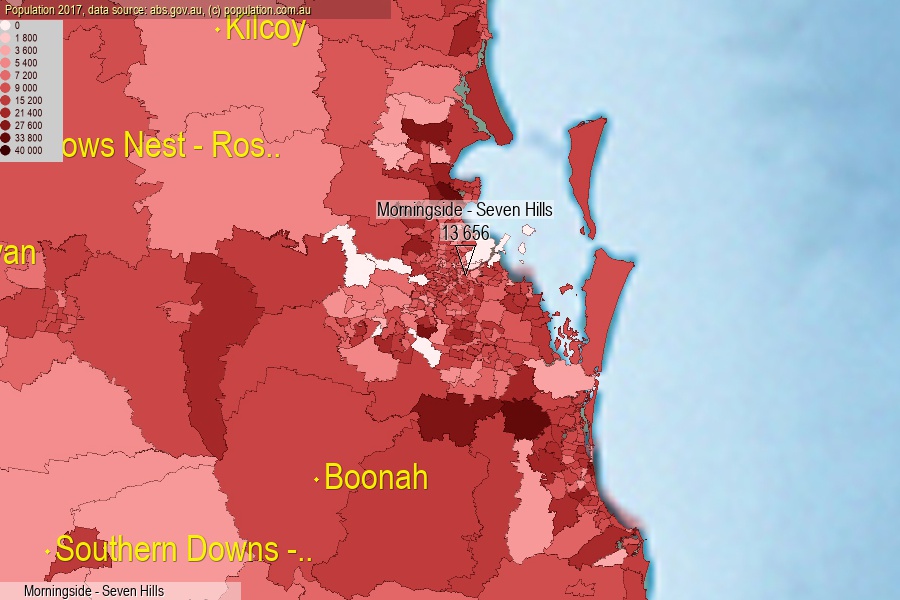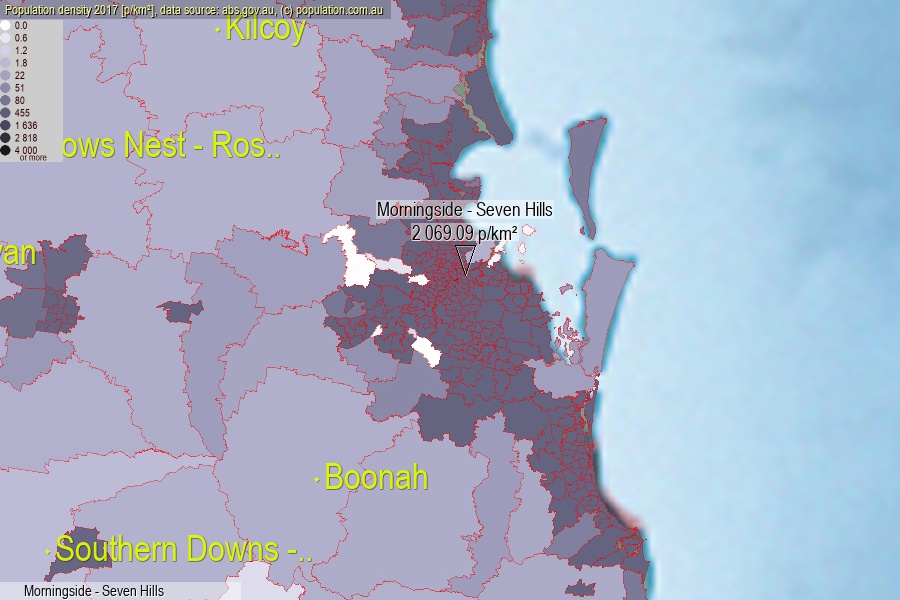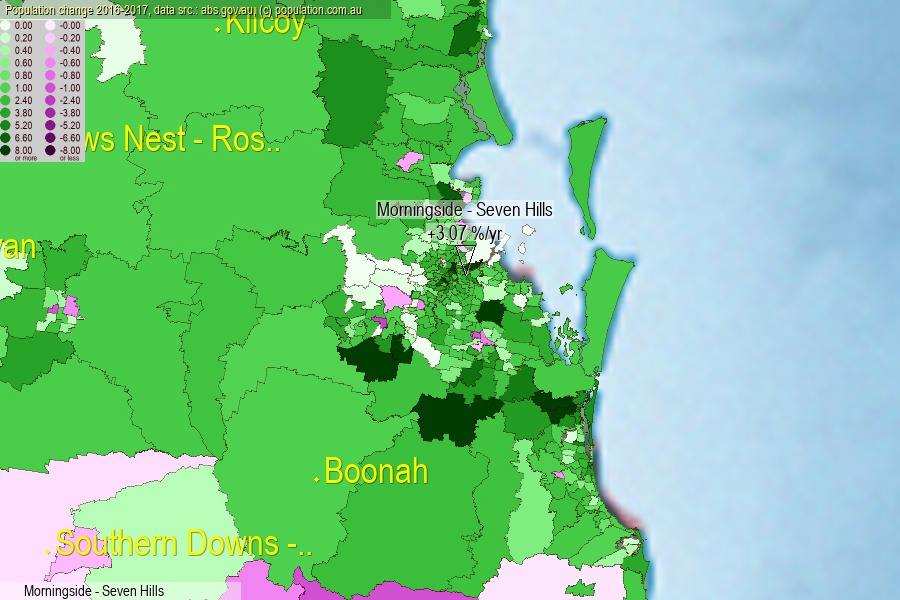 population.com.au
population.com.auLast official estimated population of Morningside - Seven Hills (as Statistical Area Level 2) was 13 656 people (on 2017-06-30)[2]. This was 0.06% of total Australian population and 0.274% of QLD population. Area of Morningside - Seven Hills is 6.60 km², in this year population density was 2 069.09 p/km² . If population growth rate would be same as in period 2016-2017 (+3.07%/yr), Morningside - Seven Hills population in 2025 would be 17 396. [0]



Click to enlarge. Morningside - Seven Hills is located in the center of the images.
Population [people], population density [p./km²] and population change [%/year] [2]
View borders » (new window) [4]
[1991-1992] -0.61 %/Yr.
[1992-1993] -0.79 %/Yr.
[1993-1994] +0.41 %/Yr.
[1994-1995] +0.41 %/Yr.
[1995-1996] +1.66 %/Yr.
[1996-1997] +1.54 %/Yr.
[1997-1998] +2.05 %/Yr.
[1998-1999] +2.73 %/Yr.
[1999-2000] +2.13 %/Yr.
[2000-2001] +1.53 %/Yr.
[2001-2002] +1.71 %/Yr.
[2002-2003] +2.70 %/Yr.
[2003-2004] +2.17 %/Yr.
[2004-2005] +2.21 %/Yr.
[2005-2006] +2.59 %/Yr.
[2006-2007] +3.69 %/Yr.
[2007-2008] +3.60 %/Yr.
[2008-2009] +2.48 %/Yr.
[2009-2010] +2.10 %/Yr.
[2010-2011] +2.29 %/Yr.
[2011-2012] +1.96 %/Yr.
[2012-2013] +2.56 %/Yr.
[2013-2014] +1.48 %/Yr.
[2014-2015] +2.31 %/Yr.
[2015-2016] +1.59 %/Yr.
[2016-2017] +3.07 %/Yr.
[0] Calculated with linear interpolation from officially estimated population
[1] Read more about SA2 and Australian Statistical Geography Standard (ASGS) on abs.gov.au
[2] Population data from Australian Bureau of Statistics (Population and density: 2017; change: 2016-2017)
[3] Digital Boundaries: Australian Statistical Geography Standard (ASGS) 2016.
[4] Border coordinates are simplifyed using Ramer-Douglas-Peucker algorithm.